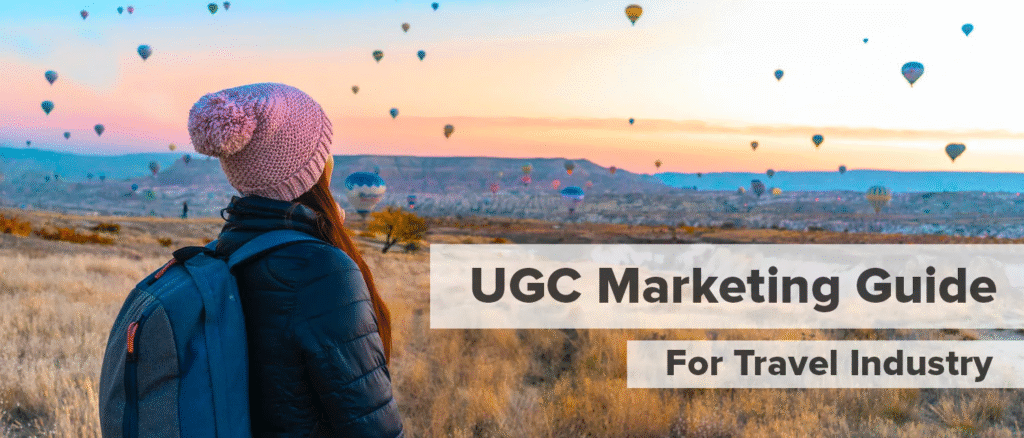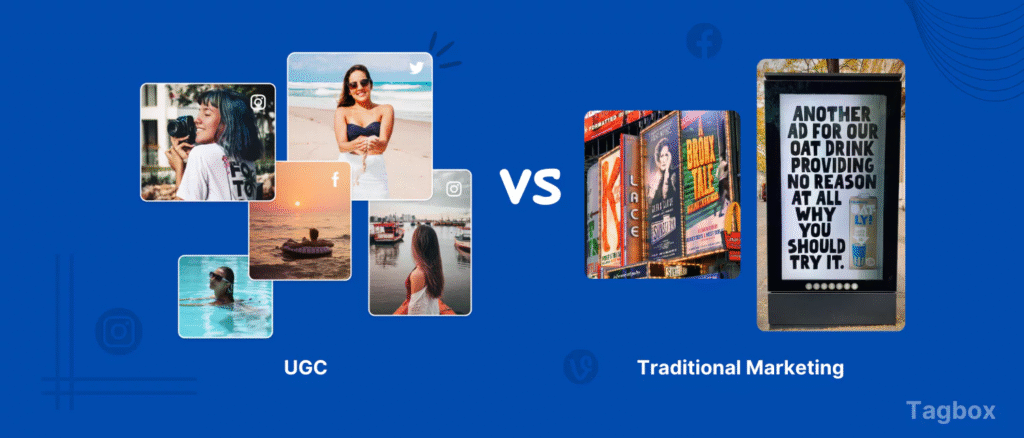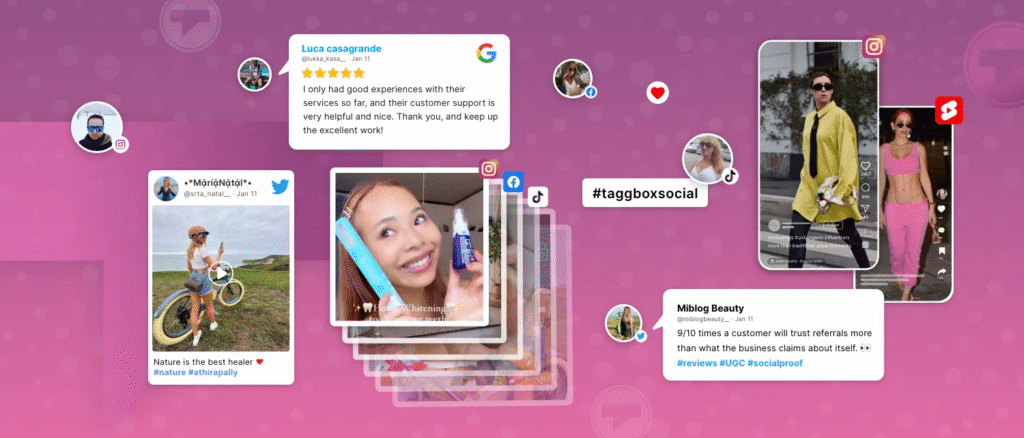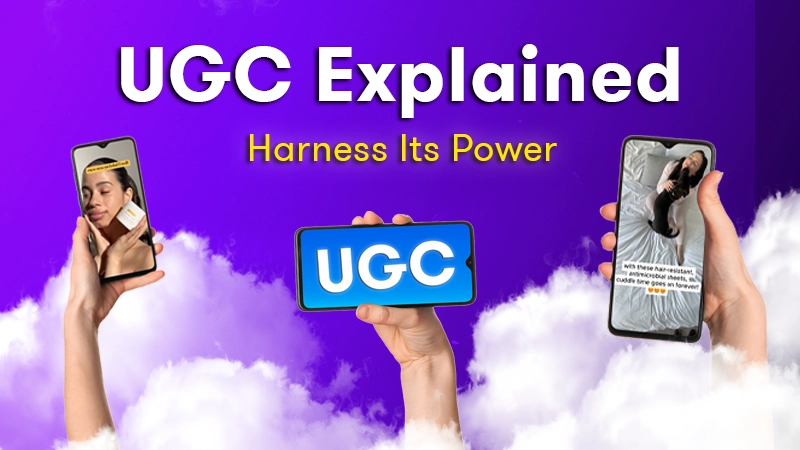Discover why travel brands are replacing paid ads with User-Generated Content (UGC). Learn how real travelers are becoming the best marketers for hotels, airlines, and destinations—boosting trust, engagement.
Travel brands are shifting away from traditional paid ads toward User-Generated Content (UGC) because it delivers higher trust, engagement, and conversion while reducing cost and ad fatigue. This in-depth guide explores why UGC is now outperforming ads.

The New Age of Travel Marketing
In the golden era of digital storytelling, travelers are no longer passive consumers—they’re the new creators, marketers, and influencers. Gone are the days when expensive ad campaigns alone could inspire wanderlust. Today, people crave authentic experiences, real reviews, and unfiltered visuals from real travelers.
That’s why leading travel brands—from airlines to boutique hotels—are turning to User-Generated Content (UGC) as their most valuable marketing weapon.
Whether it’s an Instagram story of a sunset over Santorini, a candid TikTok about a hotel stay, or a detailed TripAdvisor review—each piece of UGC acts as a miniature trust engine, converting curiosity into bookings.
This isn’t just a marketing fad; it’s a full-scale shift in the travel industry. Let’s explore why this change is happening and how your brand can leverage it for exponential growth.
What Exactly Is User-Generated Content (UGC)?
User-Generated Content (UGC) refers to any form of content—photos, videos, reviews, social media posts, stories, or blogs—created by customers instead of brands.
In travel marketing, this typically includes:
- Traveler photos tagged with a destination or hotel hashtag
- Reels or TikToks capturing vacation highlights
- Reviews on Google, TripAdvisor, or booking platforms
- Blog posts or vlogs documenting trips
- Tweets and captions sharing travel experiences
Unlike paid influencer content, UGC is raw and organic. It’s peer-to-peer storytelling—and that’s what makes it powerful.
Example: When a traveler posts “The view from my room at @Hilton Maldives is unreal! 😍,” that single photo can drive hundreds of potential guests to check availability—without Hilton spending a dime on ads.
Why Are Travel Brands Choosing UGC Over Traditional Ads?
Travel marketers have realized one truth: people trust people, not ads.
According to research by CrowdRiff, a leading visual marketing platform:
- 92% of consumers trust word-of-mouth and UGC more than brand-created content.
- 85% say UGC influences them more than polished marketing visuals.
In travel—where decisions are emotional and high-value—authentic content wins every time.
Let’s explore the seven major reasons behind this seismic shift.

Authenticity Builds Trust
Modern travelers are skeptical. They’ve seen too many perfect beaches and photoshopped skies. UGC breaks through that noise by offering unfiltered reality.
When a potential guest sees a real traveler’s photo—complete with imperfect lighting and genuine excitement—it feels relatable.
Stat: 93% of consumers say UGC helps them make more confident purchase decisions (Source: Stackla).
Case Example:
When Tourism Australia launched its “#SeeAustralia” campaign, it flooded social media with traveler photos. Engagement skyrocketed—because these weren’t ad shoots, they were real stories from real adventurers.
UGC Drives Higher Engagement
Social platforms reward authentic interactions. Branded ads might get impressions, but UGC gets comments, shares, and saves—the metrics that matter most.
- Posts with UGC enjoy 4x higher engagement than branded content.
- 90% of travelers trust content shared by friends over brand campaigns.
Example:
Airbnb’s entire Instagram feed once consisted primarily of UGC—guests sharing their stays. That strategy not only saved creative costs but turned every guest into a mini brand ambassador.
Cost-Effective & Scalable Marketing
Creating professional travel ads is expensive—shoots, models, editing, and ad placements add up fast. UGC, however, is self-sustaining.
You empower your customers to become creators, producing thousands of diverse, localized assets for free or with small incentives.
Example:
Air France ran Facebook ads using passenger-submitted photos instead of stock images. The result?
- 4–11% higher click-through rates
- 21% lower cost per click
- 9% lower cost per acquisition
UGC doesn’t just reduce costs—it increases ROI.

Social Proof Converts Better
Humans follow other humans. In marketing psychology, this is called social proof—and it’s the backbone of UGC success.
When travelers see other people enjoying your brand, they feel safer making a purchase decision.
- 48% of travelers say they’ve made bookings inspired by UGC.
- Websites with UGC galleries see a 3.2% conversion rate, doubling when users scroll through those galleries.
Example:
Hilton Hotels curates real guest photos under hashtags like #HiltonMoments and features them on booking pages. This simple integration increases dwell time and conversions.
UGC Reduces Ad Fatigue
Consumers are exhausted by polished ads. In fact, 61% of users say they skip ads because they feel “fake.”
UGC solves this problem—it looks and feels natural.
In a sea of overproduced content, UGC stands out as genuine. It blends seamlessly into user feeds, reducing resistance and enhancing curiosity.
“It’s not an ad—it’s a story.” That’s the magic formula.
Better SEO and Discoverability
UGC isn’t just great for engagement—it’s also a goldmine for SEO.
Search engines love fresh, authentic, and diverse content. Every photo, review, and testimonial adds:
- New keywords and long-tail phrases (especially with location names)
- Alt text and captions that improve image search visibility
- Backlinks and mentions when users share your content
Incorporating UGC into your WordPress site boosts your E-E-A-T (Experience, Expertise, Authoritativeness, Trustworthiness)—a critical ranking factor.
Community-Driven Brand Growth
When travelers create content for your brand, they’re not just customers—they’re part of a community.
This sense of belonging fuels long-term loyalty.
People love being recognized by the brands they admire. Featuring their photo, tagging them, or reposting their story builds emotional equity.
Example:
Destination Canada launched a UGC campaign encouraging travelers to post their experiences with #ExploreCanada. They didn’t just gain content—they built a movement of travel storytellers.
Real-World Case Studies of UGC Success in Travel
Let’s look at a few shining examples of how travel brands are successfully using UGC.
Air France
By replacing branded visuals with traveler photos in Facebook ads, Air France achieved:
- Up to 21% reduction in CPC
- 11% increase in CTR
- More positive sentiment across campaigns
Hilton Hotels
Hilton features authentic guest photos across its social channels and booking pages. This visual proof boosts trust and drives more direct bookings.
Tourism Queensland
The tourism board created #ThisIsQueensland—a hashtag campaign encouraging visitors to share their adventures. They received thousands of tagged posts and built a gallery that increased their website traffic dramatically.
Step 1: Feature Traveler Stories in Blogs
- Publish traveler journeys with their consent.
- Use keyword-rich titles like “How Our Guest Sarah Explored Bali in 5 Days.”
- Embed photos and videos with proper alt text.
- Link internally to destination pages.
Step 2: Create Dynamic UGC Galleries
- Use plugins like Taggbox or Smash Balloon Instagram Feed.
- Allow uploads via simple forms or hashtags.
- Optimize every image caption for local SEO.
Step 3: Use Rank Math Schema
- Add
Review,ImageObject, orTouristAttractionschema for rich snippets. - Highlight star ratings, user names, and destinations.
- Rank Math automatically generates image sitemaps—enable this feature.
Step 4: Optimize URL & Meta Structure
Keep URLs short, descriptive, and SEO-friendly:
/user-stories-paris//travel-gallery-maldives/
Write enticing meta titles:
“7 Authentic Travel Stories That’ll Inspire Your Next Trip | BrandName”
Step 5: Speed & Mobile Optimization
- Enable lazy loading for images.
- Compress files using WebP.
- Ensure pages are AMP compatible for mobile users.
Workflow: How to Collect and Moderate UGC Efficiently
Managing hundreds of user submissions requires structure. Here’s a step-by-step guide.
Phase 1: Foundation
- Set up a UGC policy detailing rights, consent, and credit.
- Launch a branded hashtag (e.g. #DiscoverWithUs2025).
- Encourage sharing via post-stay emails or QR codes at locations.
Phase 2: Activation
- Curate top UGC daily for reposting.
- Embed UGC galleries on key pages (home, destination, booking).
- A/B test UGC vs branded visuals in ads.
Phase 3: Optimization
- Track engagement and conversion metrics.
- Incentivize high-performing creators.
- Refresh galleries monthly for content freshness.
Measuring Success: Key UGC Metrics to Track
- Engagement Rate: Likes, shares, saves, comments
- Conversion Rate: Bookings or inquiries generated
- Cost Per Acquisition (CPA): Compare UGC vs ads
- User Growth: Number of contributors per month
- SEO Metrics: Organic traffic to UGC pages
- Sentiment Analysis: Positive mentions and hashtags
Tools like Google Analytics, Sprout Social, and Crowdriff Insights can help you monitor UGC impact.
Challenges & How to Overcome Them
| Challenge | Solution |
|---|---|
| Copyright & consent issues | Always seek permission before reposting |
| Low-quality submissions | Provide content guidelines or sample prompts |
| Stale content | Rotate and archive regularly |
| Negative reviews | Address them transparently—authenticity matters |
| Poor moderation | Use hybrid (AI + human) review systems |
Top 10 FAQs About UGC in Travel Marketing
1. What makes UGC more effective than standard display ads for travel brands?
UGC resonates because it reflects real people in real situations—unpolished, relatable, and truthful. For travel, where vacations are high-stake investments, consumers seek authenticity and social proof. According to a study, 92% of consumers trust UGC more than branded content. CrowdRiff UGC also drives better engagement, lower CPC, and reduced ad fatigue since it feels less like marketing and more like recommendation.
2. How can travel brands persuade users to contribute high-quality content?
- Gamify contributions—photo contests, “trip of the month”
- Offer small rewards, vouchers, loyalty points
- Recognize contributors publicly (spotlight them)
- Make upload easy: mobile-friendly forms, widget uploads, QR codes
- Provide prompts or content templates (e.g. “Show us your sunrise view”)
Always be transparent about how the content will be used; trust encourages participation.
3. Do travel brands need user permission to repurpose UGC in ads or site content?
Yes. You should obtain explicit consent, ideally via a terms-of-use checkbox or email reply. Use rights-management tools or include a simple agreement that allows usage in marketing, social media, and website. Always credit the creator. This protects your brand and builds trust.
4. Which UGC formats work best in travel marketing?
- Photos (scenic, candid, immersive)
- Short videos / Reels / TikToks
- Testimonials / reviews with photos
- Instagram Stories / reels with geotags
- Blog posts or microblogs describing traveler journey
5. Can UGC be used in paid ad campaigns?
Absolutely—and that’s one of its most powerful uses. After obtaining permission, brands can incorporate UGC images or videos in Facebook/Instagram/TikTok ads. Many campaigns show lower CPAs, higher CTRs, and longer post-click engagement when using UGC vs polished branded assets.
6. How do you moderate UGC at scale without degrading user experience?
- Use a two-tier moderation: auto-filter + human review
- Define clear rules (e.g. no offensive content, no watermarks, no copyrighted music)
- Use tags/metadata to categorize content
- Set up queues for new uploads
- Automate notifications to users whose content was accepted
- Maintain a “safe zone” backup gallery in case contested content must be removed
Balance moderation rigor with speed—delaying too long decreases user enthusiasm.
7. What metrics should travel brands track when using UGC?
- Engagement metrics: likes, shares, comments, time on page
- Conversion metrics: bookings, leads, form submissions
- Scroll depth and dwell time in UGC galleries
- CTR / CPC / CPA in UGC-based ads
- UGC volume growth (how many users submit content)
- Content freshness / rotation rate
Link performance back to business metrics—bookings, revenue, loyalty.
8. What are the common pitfalls travel brands encounter with UGC?
- Lack of user consent / licensing issues
- Poor moderation leading to low-quality content
- Stale content that no one updates or rotates
- Over-reliance on UGC—losing brand voice entirely
- Not optimizing images for SEO or page speed
- Ignoring mobile experience
- Underestimating copyright or privacy risk
Plan for governance and fallback.
9. How will UGC evolve in 2025 and beyond for travel marketing?
- More synergy with creator-generated content (CGC) as everyday travelers shift into blended roles. Agility PR Solutions+2CrowdRiff+2
- AI curation & tagging to automate selection
- Interactive AR/VR UGC experiences
- Deeper integration into metaverse and immersive travel previews
- Tighter linkage between UGC and bookings via social commerce
Travel brands must stay agile to ride the next wave.
10. How do you SEO-optimize UGC content to rank in Google?
Long-form narrative around gallery content to supply context and keyword relevance
Use descriptive alt text (with destination, landmark, theme)
Surround images with meaningful text and captions
Use structured data (e.g. ImageObject)
Ensure UGC content lives on crawlable pages
Include UGC in sitemaps
Internal linking from high-authority pages
Explain to Google what the image is about (e.g. via img title, caption)
Key Takeaways
- UGC builds trust, authenticity, and emotional connection.
- It’s cheaper and more effective than ads for travel marketing.
- Integrate UGC into your WordPress site with Rank Math optimization.
- Always prioritize consent, moderation, and SEO hygiene.
- Track performance metrics and refresh content regularly.
Conclusion: Elevating Your Travel Brand Through UGC
In a world saturated with polished ads, authentic voices win. Travel marketing holds a unique opportunity—every customer is a storyteller with a camera. By shifting your strategy from “broadcasting messages” to “amplifying experiences,” you harness humility, trust, and social proof that paid media can’t match.
As you build a UGC-first ecosystem—collecting, curating, moderating, embedding, and amplifying user content—you’re not just saving on ad costs; you’re growing your brand’s emotional equity. When travelers see people like them discovering, celebrating, and sharing your destinations, they’re more likely to book and share their own journey.




